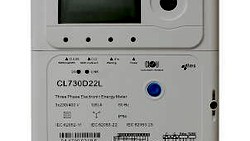Current Instrument Transformers (CTs) play a vital role in electrical systems for accurate current measurement. They provide a safe and practical means to step down high currents for monitoring and control purposes. However, leaving the secondary circuit of CTs open can lead to potentially dangerous consequences. In this article, we will look into the reasons behind the occurrence of high voltage in open secondary circuits and emphasize the associated safety risks.
Understanding Open Secondary Circuit
When the secondary circuit of a CT is open, it means there is no load or external circuit connected to the secondary winding. In this state, the CT experiences a condition of no current flow in its secondary winding. Consequently, the secondary winding behaves as a primary winding, producing a high voltage across its terminals. This voltage is directly proportional to the primary current and the turns ratio of the CT.

(symbol image, credit CLOU)
Reason for High Voltage
The high voltage in an open secondary circuit can be attributed to electromagnetic induction. Under normal operation, the primary winding of the CT carries the actual current, which produces a magnetic field that causes mutual induction in the secondary winding. This induction generates a voltage across the secondary winding proportional to the primary current. However, in an open circuit scenario, the absence of a load results in no current flowing through the secondary winding. As a result, the full induced voltage remains across the terminals of the open secondary circuit.
An example of the potential voltage generated in an open secondary circuit of a Current Instrument Transformer (CT) can provide a clearer understanding. Let's consider a situation where a CT has a turns ratio of 1000:1 and is measuring a primary current of 100 A. In this scenario, the voltage induced in the secondary winding can be calculated by multiplying the primary current by the turns ratio.
Voltage = Primary current x Turns ratio
Voltage = 100 A x 1000
Voltage = 100,000 V
Therefore, in this example, the voltage in the open secondary circuit can reach a staggering 100 kV. This showcases the significance of the safety risks associated with open secondary circuits and the critical importance of implementing proper precautions to prevent such high voltages from occurring.
Safety Risks and Hazards
The presence of high voltage in an open secondary circuit poses significant safety risks. First and foremost, it represents an electrocution hazard to anyone in close proximity to the open circuit terminals. The exposed high voltage can potentially cause severe electric shocks, leading to injuries or even fatalities.
Additionally, the insulation materials used in CTs are designed to withstand normal operating voltages but may not be capable of handling the excessively high voltages present during open circuit conditions. This can lead to insulation breakdown, resulting in arc flashes or electrical insulation failure. The resulting equipment damage and system downtime can have substantial financial implications.
Mitigating the Risks
![]() To prevent the potential hazards associated with open secondary circuits in CTs, it is essential to ensure that the secondary winding is never left open. This means either connecting a suitable load/resistor across the terminals or shorting the terminals together (known as short-circuiting). By providing a closed circuit for the secondary winding, the induced voltage is dissipated safely, minimizing the associated risks.
To prevent the potential hazards associated with open secondary circuits in CTs, it is essential to ensure that the secondary winding is never left open. This means either connecting a suitable load/resistor across the terminals or shorting the terminals together (known as short-circuiting). By providing a closed circuit for the secondary winding, the induced voltage is dissipated safely, minimizing the associated risks.
Takeaway
Leaving the secondary circuit of Current Instrument Transformers (CTs) open can lead to the generation of dangerously high voltages. Understanding the reasons behind this occurrence and the associated safety risks is crucial for electrical professionals.
By ensuring the secondary circuit is always properly connected or shorted, the potential hazards can be effectively mitigated, protecting both personnel and equipment from harm.
Regarding the question about ICTs (Insulating Current Transformers) in our test benches, it should be noted that these ICTs have a turns ratio of 1:1, resulting in an expected voltage of 120 V. However, these ICTs are equipped with protection mechanisms to address potential issues, such as shortening an open secondary circuit. This feature becomes particularly useful when certain test positions with meters are left unpopulated by the operator.
Editor's note: This article was originally published in July 2023 and has been updated for comprehensiveness.





All comments are moderated before being published. Inappropriate or off-topic comments may not be approved.